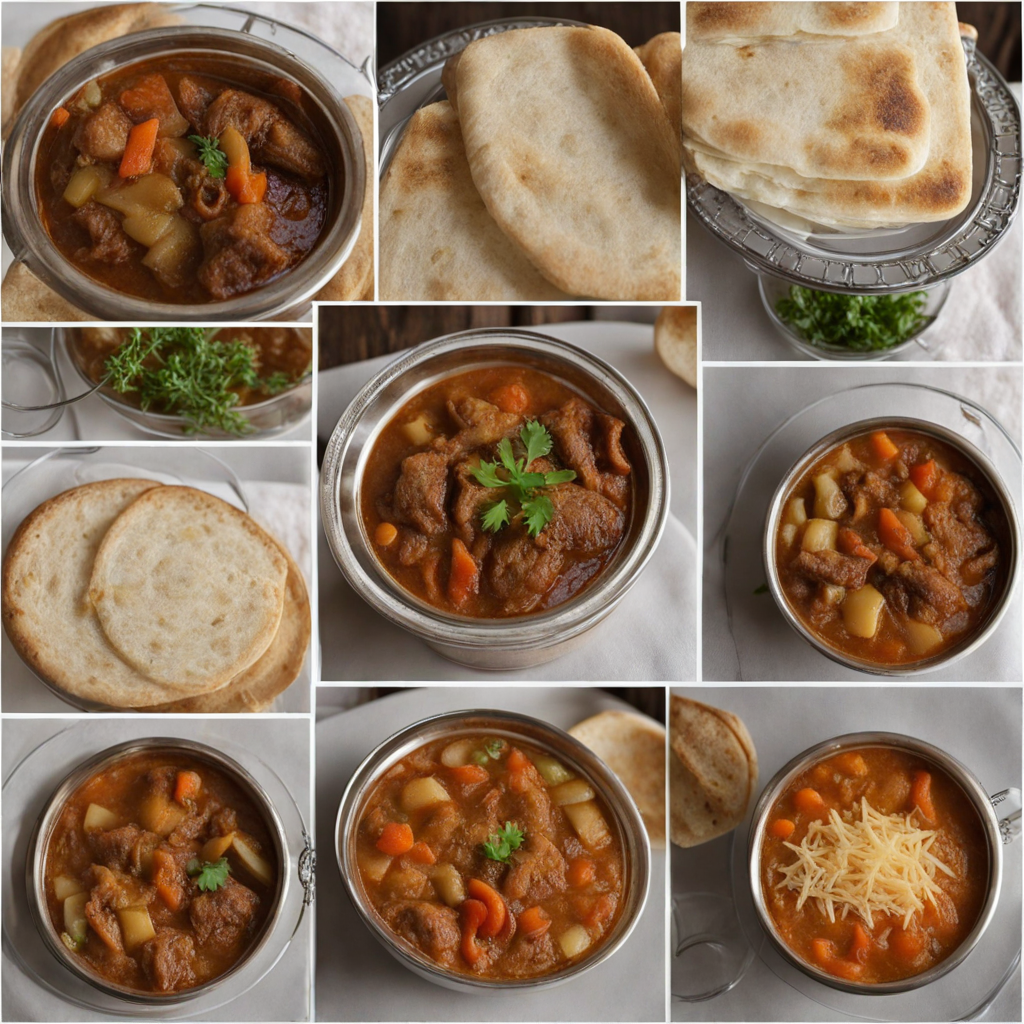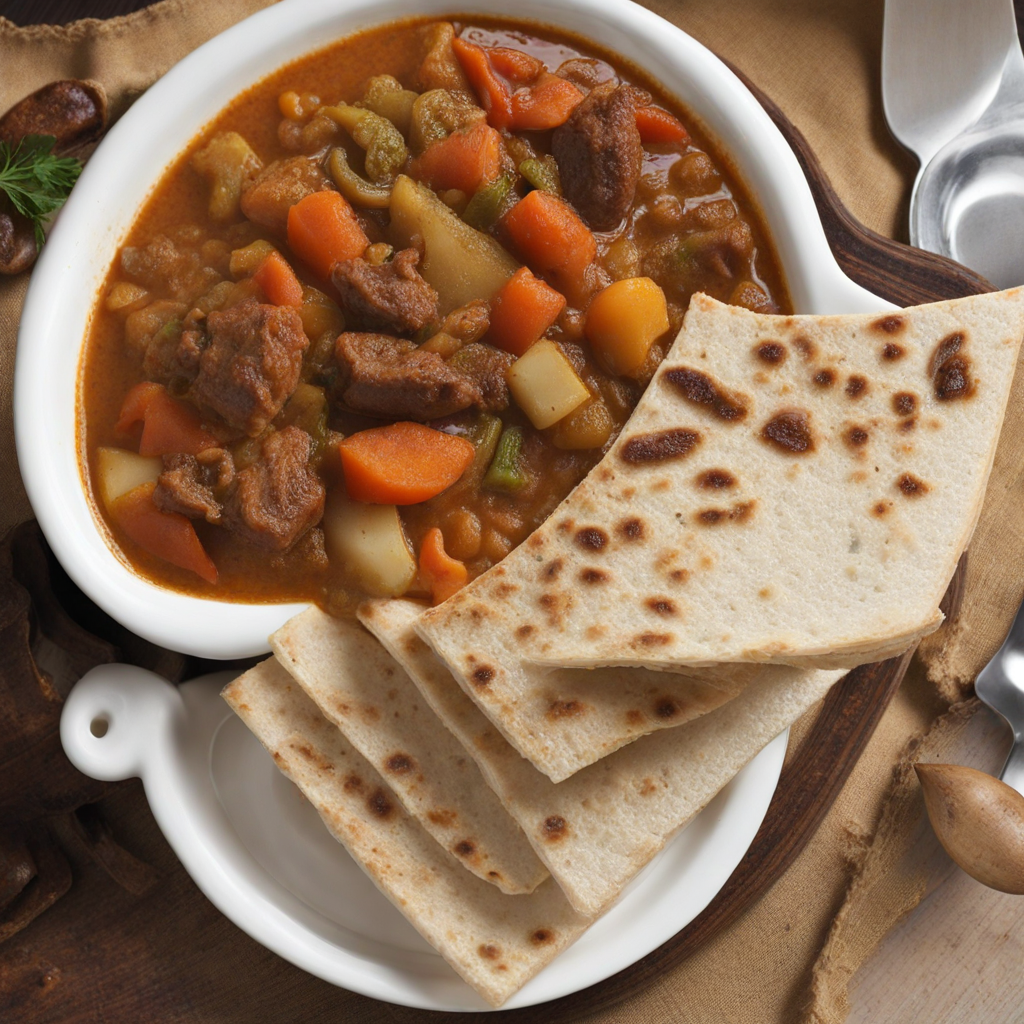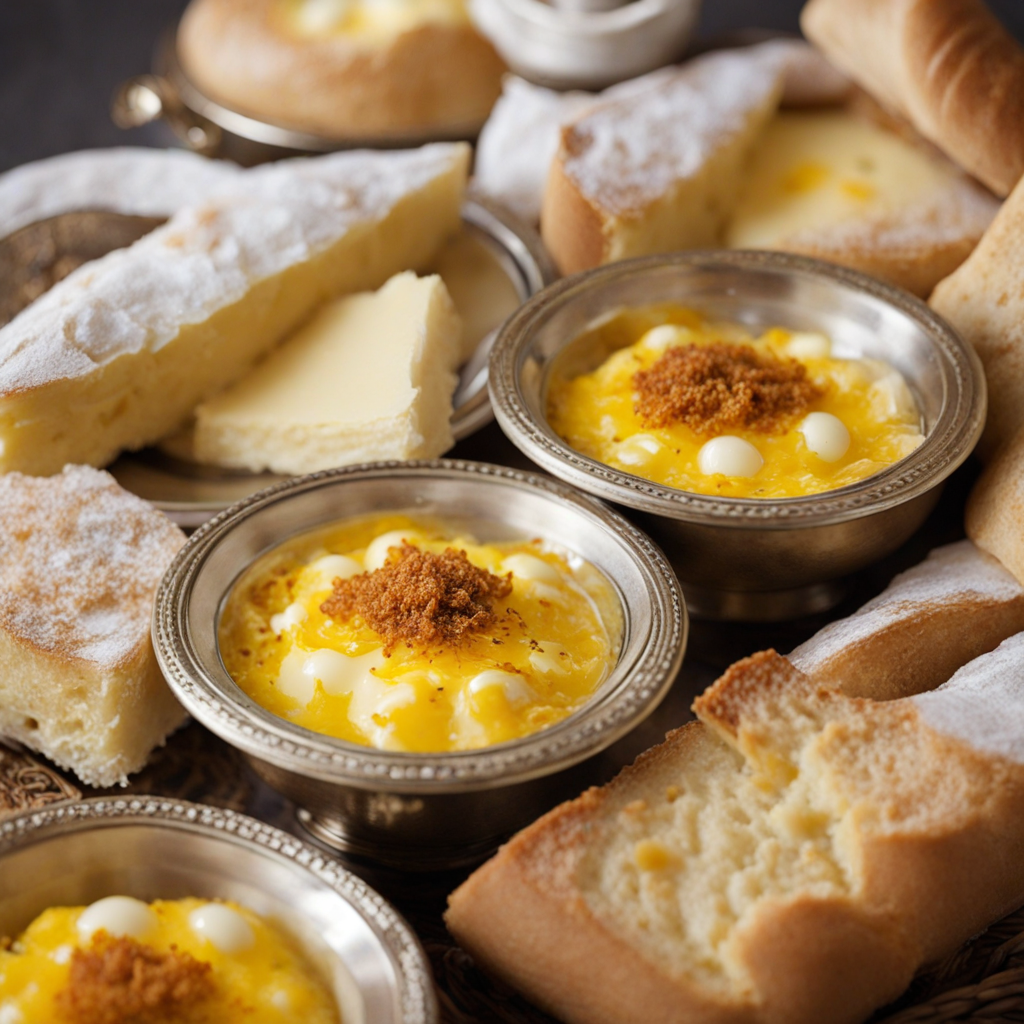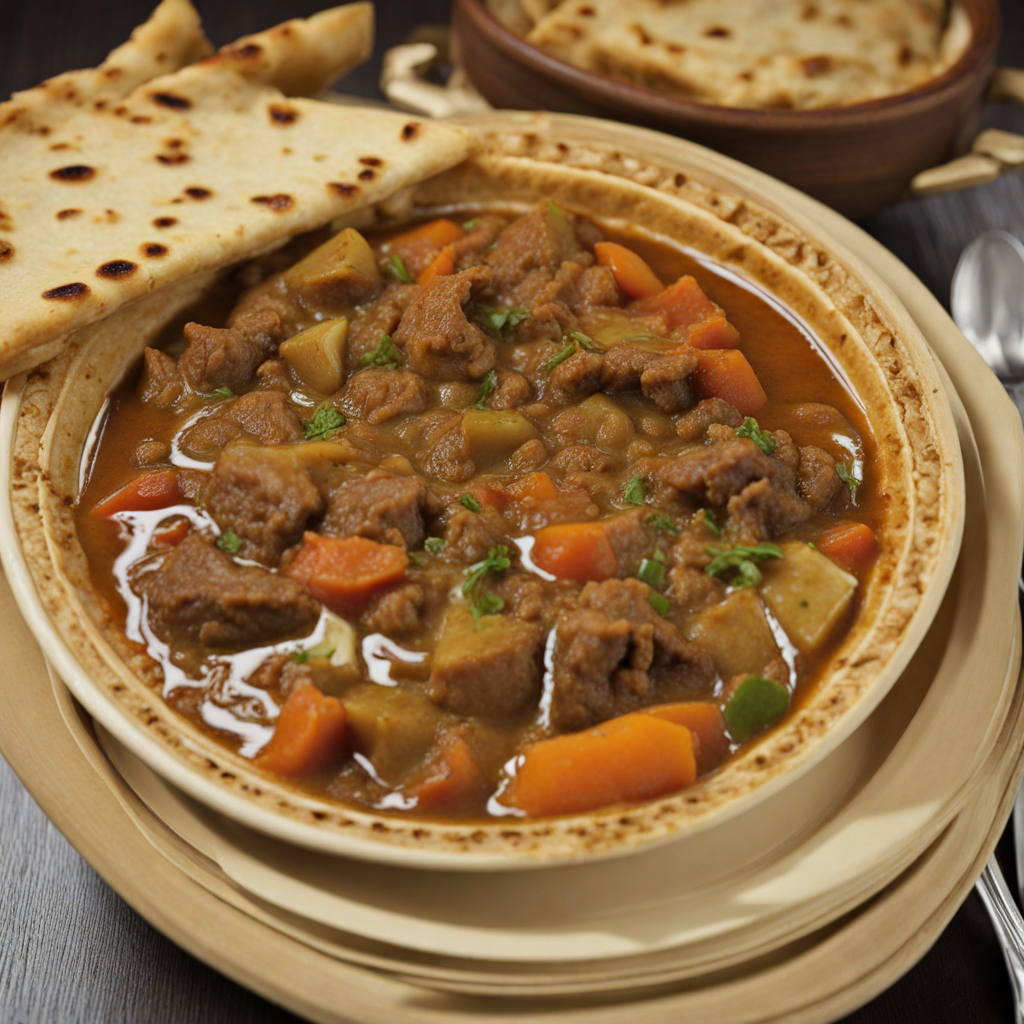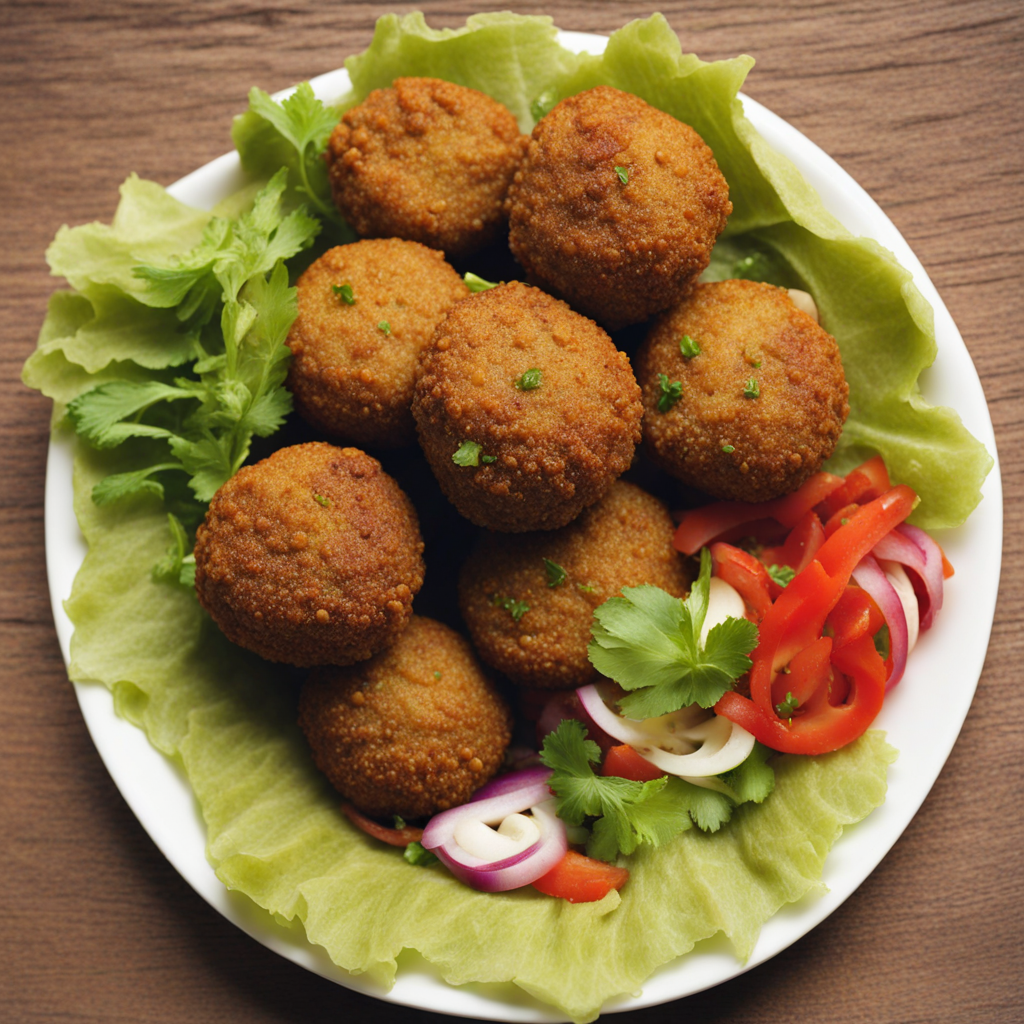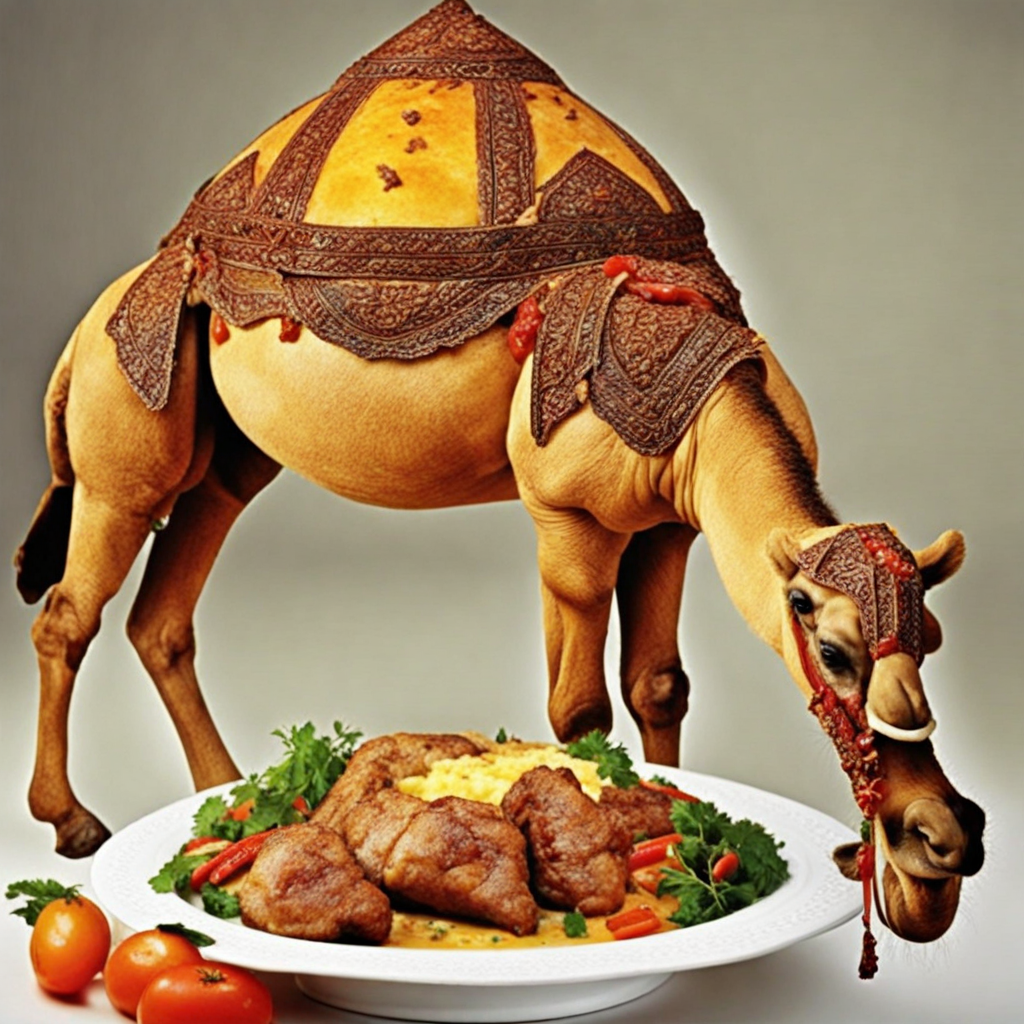Thareed
Thareed is a traditional Emirati dish that beautifully marries the flavors of meat, vegetables, and spiced bread, creating a hearty and comforting meal. The dish typically features slow-cooked meat, often lamb or chicken, which is simmered with an array of aromatic spices, including cumin, coriander, and turmeric. This gentle cooking process allows the meat to become tender and infused with the rich flavors of the spices, resulting in a savory broth that serves as the foundation of the dish. The vegetables, commonly potatoes, carrots, and tomatoes, are added to the pot, enhancing the dish's nutritional value and adding layers of texture. What sets Thareed apart is its unique use of bread—traditionally, flatbread such as khameer or regag is torn into pieces and layered at the bottom of the serving dish. Once the meat and vegetables are ready, the flavorful broth is poured over the bread, allowing it to soak up the juices and spices, creating a delightful combination of textures. The bread becomes soft and infused with the robust flavors, while also providing a satisfying base that complements the tender meat and cooked vegetables. This dish is often garnished with fresh herbs, such as coriander or parsley, adding a burst of freshness to each bite. Eating Thareed is not just a culinary experience; it embodies the essence of Emirati hospitality and communal dining. It is often served during special occasions and family gatherings, inviting everyone to partake in the rich flavors and comforting warmth of the dish. The combination of aromatic spices, tender meat, and the satisfying soak of the bread makes Thareed a perfect meal for those looking to explore the authentic tastes of the UAE, offering a delightful glimpse into the country's rich culinary heritage.
How It Became This Dish
Threed: A Culinary Heritage of the United Arab Emirates Threed, a traditional dish that holds a revered place in the culinary heritage of the United Arab Emirates (UAE), encapsulates the rich cultural tapestry of the region. This savory dish, often made with layers of bread soaked in a flavorful broth, is not only a testament to the UAE's historical reliance on trade and agriculture but also a symbol of hospitality and community bonding in Emirati culture. Origins of Threed The origins of threed can be traced back to the Bedouin lifestyle, where nomadic tribes relied heavily on minimal ingredients, often dictated by the harsh desert environment. Bread, particularly khameer or flatbread, was a staple among these tribes, serving as both sustenance and a means to soak up the flavors of various stews and broths. The word “threed” itself comes from the Arabic root ‘th-r-d,’ meaning to mix or mash, which aptly describes the process of combining bread with meat and broth. Historically, threed was a dish of practicality, designed to utilize leftover ingredients and minimize waste. As a result, it became a popular meal among families, especially during gatherings or special occasions, where the act of sharing food was paramount. The dish's evolution reflects the changes in the UAE's society—from a predominantly nomadic lifestyle to a more settled, urban existence. Cultural Significance Threed is more than just a meal; it is a cultural symbol that embodies the values of generosity, hospitality, and community in Emirati society. Traditionally, it is a dish that brings people together, often served during family gatherings, celebrations, and communal feasts. The preparation of threed is typically a communal activity, involving family members or friends who gather to cook, share stories, and bond over the meal. This aspect of communal cooking highlights the importance of social connection in Emirati culture. In the UAE, food is often a reflection of social status and identity. Threed is versatile, with recipes varying from family to family, each adding their unique touch, which can include different meats such as lamb, chicken, or even fish, as well as a variety of spices that reflect the individual’s or family’s taste. This adaptability allows threed to maintain its relevance across different generations and social contexts. Moreover, threed has a significant place during Ramadan, the holy month of fasting. It is often prepared for iftar, the meal that breaks the fast at sunset, symbolizing nourishment and the importance of sharing meals with family and friends after a day of fasting. The dish serves as a reminder of the communal spirit and the importance of togetherness, especially during festive occasions. Development Over Time As the UAE evolved into a modern nation, so did its culinary landscape. Threed has adapted to contemporary tastes while maintaining its traditional roots. The rise of globalization and exposure to international cuisines has influenced how threed is prepared and served today. In modern Emirati kitchens, you might find variations that incorporate ingredients like vegetables, spices from South Asia, or even influences from Western cuisines, showcasing the UAE’s diverse cultural interactions. In recent years, there has been a resurgence of interest in traditional dishes among younger Emiratis, spurred by a growing appreciation for cultural heritage and the importance of preserving culinary traditions. Many restaurants and culinary schools now offer classes and workshops on traditional Emirati cooking, with threed being a centerpiece dish. This revival emphasizes the importance of passing down cooking skills and the stories behind the dishes to future generations. Additionally, threed has found its place in the modern dining experience, with chefs elevating it in fine dining settings. Innovative presentations and gourmet interpretations have brought threed to the attention of food enthusiasts and tourists, allowing for a fusion of traditional and contemporary culinary practices. This evolution showcases the dish's versatility and the continued relevance of traditional Emirati cuisine in a globalized world. The Making of Threed The preparation of threed involves several steps, each contributing to the final dish's rich, layered flavors. The base typically starts with preparing a hearty broth, often made from meat such as lamb or chicken, simmered with a blend of spices like cumin, coriander, and saffron, which are staples in Emirati cooking. The broth is then enriched with vegetables such as carrots and potatoes, adding depth and sweetness to the dish. Once the broth is ready, the bread is introduced. Traditionally, khameer or a similar flatbread is used, torn into pieces and layered at the bottom of a large dish. The hot broth and meat are then poured over the bread, allowing it to soak up the flavors and become tender. The dish is often garnished with fresh herbs such as parsley or coriander before being served, adding a fresh burst of flavor. Threed is traditionally presented in a communal style, with the entire dish placed in the center of the table, encouraging guests to serve themselves and share in the experience. This communal aspect of dining is vital in Emirati culture, where food serves as a medium for connection and hospitality. Conclusion Threed is not just a dish; it is a narrative of the United Arab Emirates’ history, culture, and evolving identity. From its humble beginnings among nomadic tribes to its esteemed status in contemporary Emirati cuisine, threed embodies the spirit of community and generosity that defines the UAE's rich cultural heritage. As the nation continues to grow and modernize, the importance of traditional dishes like threed remains steadfast, ensuring that the stories, flavors, and values of the past are carried forward into the future. In every bite of threed lies a connection to the land, the people, and the enduring spirit of Emirati hospitality.
You may like
Discover local flavors from United Arab Emirates


